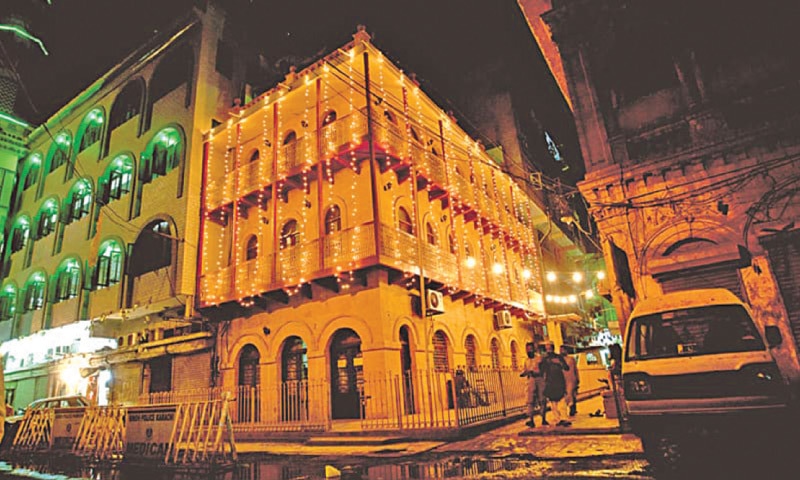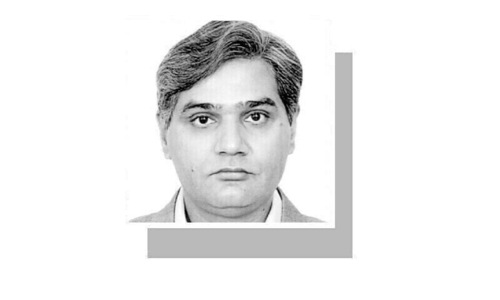It is widely believed that Quaid-i-Azam Mohammad Ali Jinnah was born in Karachi. But some local oral traditions say that he was born in Jherruck, a town in present-day Thatta district of Sindh. The proponents of the latter opinion point to a textbook published in Sindh in the 1950s to support their contention, which mentions that the Quaid-i-Azam was, indeed, born in Jherruck.
This controversy has been going on for a long time. Several attempts were made in the past by various authorities, including Syed Abdullah Shah — when he was serving as the provincial chief minister — as well as the district government of Thatta, who constituted committees to ascertain the facts of this claim. But it was all in vain.
While compiling a biography of Jinnah, I too confronted the same question and decided to approach the matter from three different angles, i.e., documentary evidence, personal statements of the Quaid-i-Azam on the subject and accounts rendered by his family members. Here is the outcome of the exercise. But before we proceed further, let’s briefly outline his family background as well as the two geographical entities involved in the issue, Jherruck and Karachi, as they existed at the time of his birth.
Family Background
The Quaid-i-Azam’s ancestors belonged to a village called Paneli in the princely state of Gondal in the Kathiawar region. His paternal grandfather, Poonjabhai, ran a business relating to weaving of coarse cloth in the village. He had four children: a daughter, Manbai, and three sons, Valibhai, Nathoobhai and Jinnahbhai. The youngest son, Jinnahbhai, who was born around 1850, left Paneli and established his business in Gondal town. In 1874, his parents married him off to Mithbai, a girl from their community. Finding Gondal too small for his ambitions, Jinnahbhai decided to move westward, to Sindh, which was emerging as a new centre of trade and commerce after the opening of the Suez Canal in 1869.
An economic hub - Jherruck
Jherruck was basically a riverine port located on the Indus, about 100 kilometres from Karachi. In the absence of a viable road and rail network in the region, the British introduced an elaborate navigational system, the ‘Indus Flotilla’, with operational headquarters at Jherruck. This place offered tremendous opportunities related to trade and commerce, and attracted enterprising people from far and wide.
The controversy around Quaid-i-Azam Mohammad Ali Jinnah’s actual birthplace — Karachi or Jherruck — has lingered for many years. We may finally have a definitive answer
The importance of Jherruck can be gauged from the fact that Prince Hassanally, the Aga Khan I, built his house there in 1843, which still stands today. The British established a school there in 1870, five years before Sir Syed Ahmed Khan established his Aligarh institute. Describing Jherruck in 1861, George Bease wrote in Sind Directory: “Sir Charles Napier regretted that he had not chosen it [Jherruck] for the European barracks instead of Hyderabad.”

Karachi - an agreeable climate for Europeans
Though Karachi existed as a small settlement for a long time, it was during the British rule that it evolved into a modern city and a great seaport. The British found it suitable for their living. In the words of Bease: “The climate seems to agree well with Europeans, the average mortality being much less than any station in the Northwest provinces.”
The opening of the Suez Canal further increased Karachi’s significance, as it became British India’s closest port to Europe. In addition to that, the route through Sindh provided an easier access to Punjab, northern India and Afghanistan.
In view of the tremendous opportunities of growth, Jinnabhai moved to Karachi in the 1870s and established his business. However, there are two points of view here. One says that Jinnabhai directly came from Gondal to Karachi. The other says that he and his family stayed for a few years at Jherruck, where the Quaid-i-Azam was born and received his early education, before coming to Karachi.
Documentary Evidence
School records are considered the most authentic documentary evidence regarding a person’s birthplace. In the case of the Quaid-i-Azam, four of his school records are available to us: three at Sindh Madressatul Islam University, and one at the Church Mission School (CMS). As per these records, Jinnah’s first admission took place on July 4, 1887 at Sindh Madressatul Islam; this has been recorded in the General Register on page 7, serial number 114. Here, ‘Karachi’ has been clearly mentioned as his ‘native place’ in front of his name.
The second and third admission records also relate to his subsequent admissions at Sindh Madressatul Islam, as he was readmitted twice during a span of about four and a half years, from 1887 to 1892. The reason for his multiple admissions there was his travels to Bombay to meet his favourite aunt.
In all these records, recorded at serial numbers 178 and 430, Karachi is mentioned as his native place. His fourth school record relates to his admission in CMS in March 1892, which he took after leaving Sindh Madressatul Islam. He studied there for about seven months until October, before leaving for England. There, too, Karachi has been mentioned as his place of birth.
With such clear mention of Karachi as his birthplace in school records, the controversy should have ended there. But there was a caveat: Jherruck itself was part of Karachi district in those days. Many people in those days, like today, mentioned the names of bigger towns or district headquarters in official documents, instead of giving the exact name of their village or town!
A closer examination of the page recording Jinnah’s first admission at Sindh Madressatul Islam reveals, however, that just above his name, the entry for the student with Serial No. 113, who was also admitted on the same day, i.e., July 4, 1887, mentions “Jherruck” as his native place, while the entry relating to Jinnah says Karachi as his birthplace. If the Quaid-i-Azam had indeed been born in Jherruck, it is unlikely that Karachi would have been mentioned as his birthplace, particularly when the entry just above records Jherruck as another student’s birthplace.
Personal Statements
Next, we move to the Quaid-i-Azam’s own statements because, in matters like this, a person’s own testimony has great value. It is on record that the Quaid-i-Azam mentioned Karachi as his birthplace many times. One such occasion was the Sindh provincial Muslim League Conference held at Karachi on October 7, 1938. While delivering the presidential address, he described Karachi as well as his association with it:
“While speaking in this great city and capital of Sindh, Karachi, with the magnificent position that it occupies, the wonderful seaport and constituting as it does the first homeland for Mussalmans, it gives me no small pleasure that I should preside over a conference the likes of which have never before been seen in Sindh. You can well imagine my surging emotions when I tell you that Karachi is my birthplace, and I cannot adequately express how deeply anxious I am for its welfare.”
Another occasion when he mentioned Karachi as his birthplace was in his letter dated April 30, 1946, addressed to an astrologer of Daily Anjam, who had requested him to provide the exact time, date and place of his birth for preparing his horoscope. In his reply, Quaid-i-Azam mentioned the time of his birth as ‘early morning’, date ‘25th December 1876’ and place ‘Karachi.’
Here it is also interesting to note that, during his entire life of about 72 years, the Quaid-i-Azam neither ever mentioned Jherruck as his birthplace nor visited it even once.
Family Accounts
Yet another source of information about such matters is the accounts rendered by his family members and contemporaries. The closest to him, amongst his family members, was his sister Fatima Jinnah. She authored a book detailing his biography, titled My Brother. She candidly mentioned that their parents had shifted to Karachi in the 1870s from Gondal, and that the Quaid-i-Azam was born in Karachi.
Conclusion
The textbook passage, it seems, was based on hearsay. Another piece of information given in the same passage is that the Quaid-i-Azam passed his matriculation examination from Sindh Madressatul Islam. The fact is that the Quaid-i-Azam left Sindh Madressatul Islam while studying in fifth class — which was two years short of matriculation. Factual errors like this make the textbook passage an unreliable source of information.
Hence, the controversy over the issue of the Quaid-i-Azam’s birthplace, based on an old textbook passage, should be resolved, once and for all.
The writer is a former vice-chancellor of Sindh Madressatul Islam University and former faculty-fellow at American University, Washington DC
Published in Dawn, EOS, July 11th, 2021















































